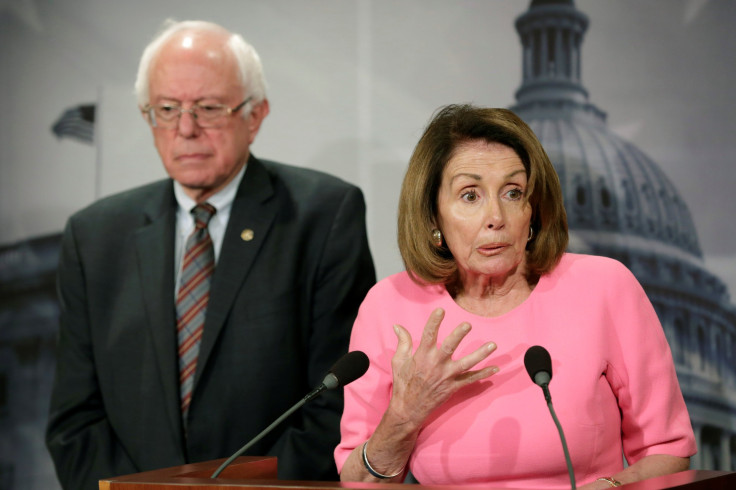Minimum Wage In Different States: Bernie Sanders To Propose $15 Minimum Wage Bill, Backed By 31 Democrats

Vermont Senator Bernie Sanders’ agenda to raise the federal minimum wage to $15 per hour, backed by 31 Democrats, will be proposed Thursday, reports said. Sanders had made this issue the focal point of his 2016 presidential campaign.
Source: @BernieSanders will reintroduce $15/hr min. wage bill on Thursday now w/ 31 Senate Dems as cosponsors
— Jeff Stein (@JStein_WaPo) May 25, 2017
That's up from just 5 in 2015
Along with Sanders and Democratic Rep. Keith Ellison, Senate Minority Leader Chuck Schumer, House Minority Leader Nancy Pelosi, and other senior Democrats will also join in releasing the legislation, Politico reported.
Read: Bernie Sanders’ Minimum Wage Bill Backed By Democrats
19 states began the year 2017 with higher minimum wages. These included Alaska, Arizona, Arkansas, California, Colorado, Connecticut, Florida, Hawaii, Maine, Massachusetts, Michigan, Missouri, Montana, New Jersey, New York, Ohio, South Dakota, Vermont, and Washington, according to the website of National Conference of State Legislatures (NCSL).
Out of these 19 states, seven states — Alaska, Florida, Missouri, Montana, New Jersey, Ohio and South Dakota — automatically increased their rates based on the cost of living. Five states — Arizona, Arkansas, Colorado, Maine and Washington — increased their rates through ballot initiatives previously approved by voters, and seven states — California, Connecticut, Hawaii, Massachusetts, Michigan, New York and Vermont — increased it as a result of legislation passed in prior sessions, according to NCSL.
The states with highest minimum wages are Arizona and Vermont with $10 as the current minimum wage, Connecticut with $10.10, California with $10.50, Massachusetts with $11, and Washington D.C. with $11.50.
The states with lowest minimum wages are Wyoming and Georgia with $5.15 while Wisconsin, Virginia, Utah, Texas, Pennsylvania, North Dakota, North Carolina, Kentucky, Kansas, Iowa, Indiana, Idaho, have $7.25. New Mexico has $7.50, Missouri has $7.70 and Florida with $8.10, according to NCSL.
In the past, the Democrats have been skeptical of the $15 benchmark, calling it impractically high. Their 2016 presidential candidate, Hillary Clinton, had officially stuck to raising the minimum wage to $12.
However, with President Donald Trump taking office January 20, and the Republicans tightening their hold over both the House of Representatives and the Senate, the Democrats took a more radical stand, moving to the left.
Moreover, the Democrats' support for Sanders $15 minimum wage proposal meant it would offer them an increasing voter base ahead of the 2018 midterms.
If Bill 33 had been in place since 1998, minimum wage today would be $7.40; minimum wage workers would earn $7,000 less per year. #mbpoli pic.twitter.com/EVKiC5QQXL
— Josh Brandon (@ecojosh) May 23, 2017
In an article written for the Seattle Times, Sanders had argued the reasons required to introduce $15 minimum wage bill. He said that while large corporations make huge profits and top CEOs earn about 335 times more an hour than the average worker, millions of Americans are struggling to survive on totally inadequate wages. The situation is so worse that there is not even a single state left in the U.S. where a full-time minimum wage worker can afford easily a one-bedroom apartment.
He argued the current $7.25 an hour federal minimum wage is a starvation wage. Hence, there is a need to introduce legislation to raise it to $15 an hour by 2024 and automatically adjust it thereafter to keep up with the rising cost of living.
The “Fight for $15” movement began in November 2012 with the support of powerful labor unions. In 2016, the states of New York and California passed legislation raising the minimum wage to $15 an hour over several years.
© Copyright IBTimes 2024. All rights reserved.





















